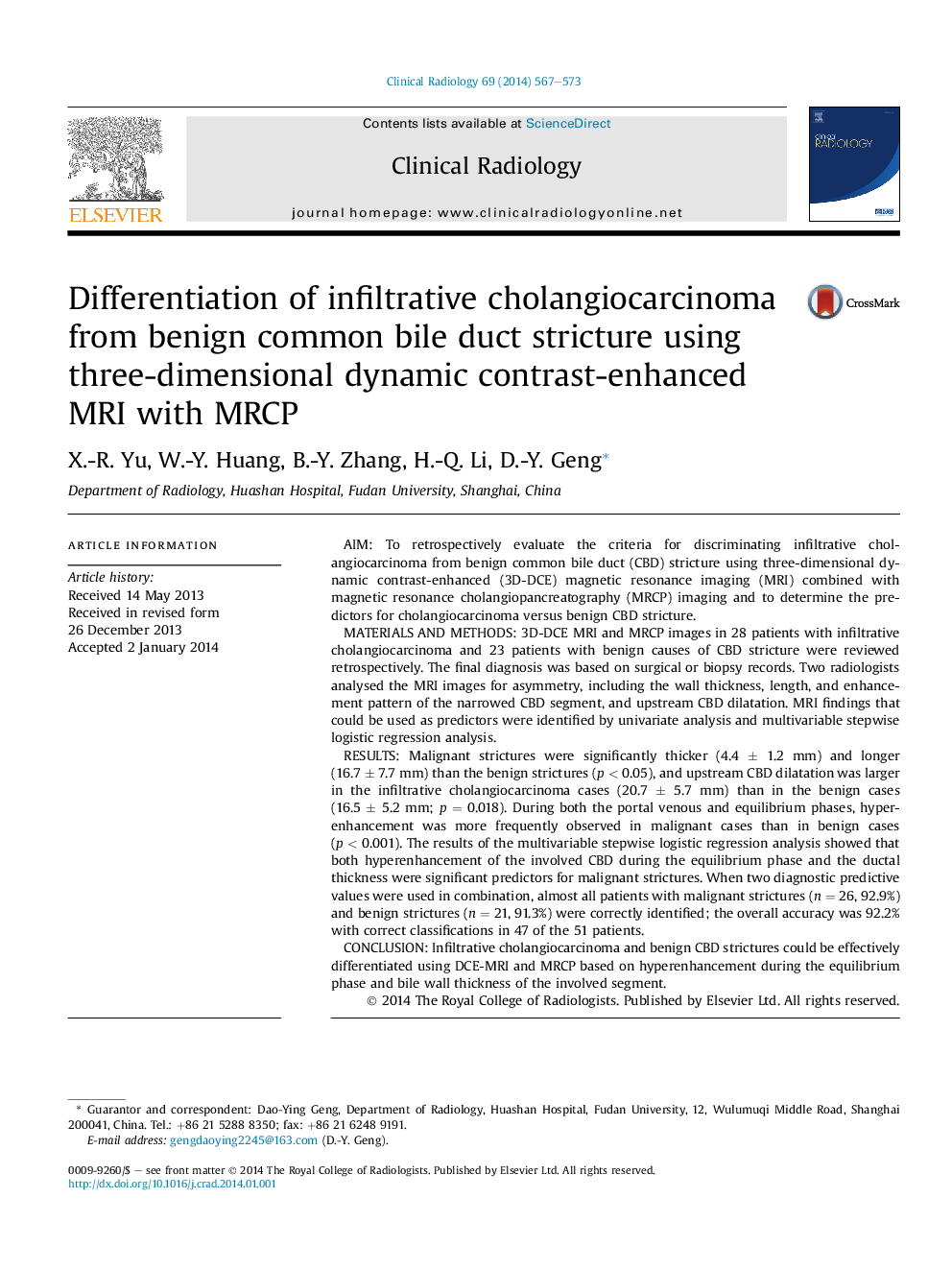| کد مقاله | کد نشریه | سال انتشار | مقاله انگلیسی | نسخه تمام متن |
|---|---|---|---|---|
| 3981737 | 1257703 | 2014 | 7 صفحه PDF | دانلود رایگان |

AimTo retrospectively evaluate the criteria for discriminating infiltrative cholangiocarcinoma from benign common bile duct (CBD) stricture using three-dimensional dynamic contrast-enhanced (3D-DCE) magnetic resonance imaging (MRI) combined with magnetic resonance cholangiopancreatography (MRCP) imaging and to determine the predictors for cholangiocarcinoma versus benign CBD stricture.Materials and methods3D-DCE MRI and MRCP images in 28 patients with infiltrative cholangiocarcinoma and 23 patients with benign causes of CBD stricture were reviewed retrospectively. The final diagnosis was based on surgical or biopsy records. Two radiologists analysed the MRI images for asymmetry, including the wall thickness, length, and enhancement pattern of the narrowed CBD segment, and upstream CBD dilatation. MRI findings that could be used as predictors were identified by univariate analysis and multivariable stepwise logistic regression analysis.ResultsMalignant strictures were significantly thicker (4.4 ± 1.2 mm) and longer (16.7 ± 7.7 mm) than the benign strictures (p < 0.05), and upstream CBD dilatation was larger in the infiltrative cholangiocarcinoma cases (20.7 ± 5.7 mm) than in the benign cases (16.5 ± 5.2 mm; p = 0.018). During both the portal venous and equilibrium phases, hyperenhancement was more frequently observed in malignant cases than in benign cases (p < 0.001). The results of the multivariable stepwise logistic regression analysis showed that both hyperenhancement of the involved CBD during the equilibrium phase and the ductal thickness were significant predictors for malignant strictures. When two diagnostic predictive values were used in combination, almost all patients with malignant strictures (n = 26, 92.9%) and benign strictures (n = 21, 91.3%) were correctly identified; the overall accuracy was 92.2% with correct classifications in 47 of the 51 patients.ConclusionInfiltrative cholangiocarcinoma and benign CBD strictures could be effectively differentiated using DCE-MRI and MRCP based on hyperenhancement during the equilibrium phase and bile wall thickness of the involved segment.
Journal: Clinical Radiology - Volume 69, Issue 6, June 2014, Pages 567–573